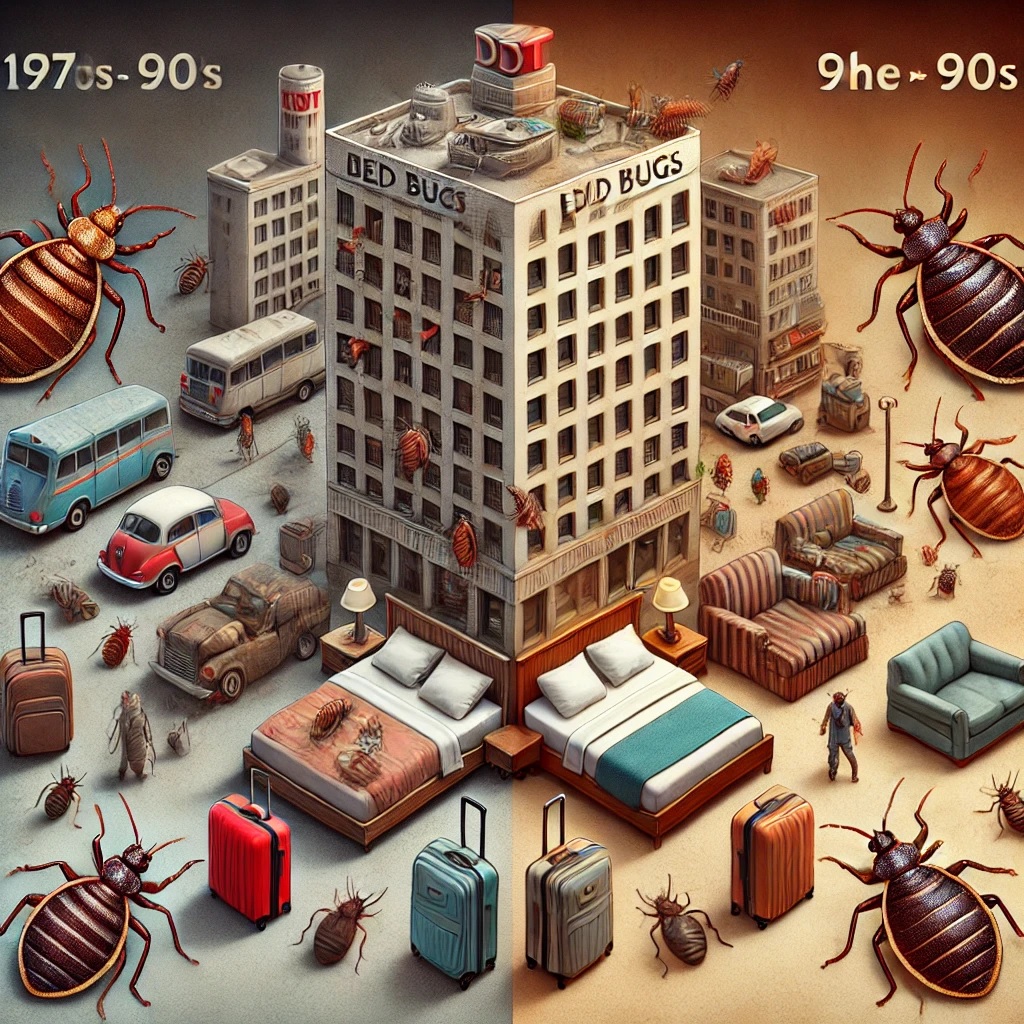When you think of bed bugs, you probably imagine them as a modern-day nuisance. But here’s the thing: Bed bugs have been around forever, and they really made themselves at home in the 20th century. It was a rollercoaster of a century for these little pests. From booming infestations to almost disappearing, and then bouncing back with a vengeance by the end of the century. Let’s take a trip through time to see how bed bugs went from public enemy number one to nearly forgotten, and back again.
At the start of the 20th century, bed bugs were a massive problem. Seriously, they were everywhere. If you lived in a city, chances were high that you had at least heard of someone dealing with an infestation. And if you lived in an overcrowded, poorly ventilated building, bed bugs might have been regular visitors.
Imagine living in a cramped London flat, sharing your space with these creepy crawlers. Back then, housing conditions weren’t what they are today, and many places were breeding grounds for pests. Bed bugs thrived in places with poor sanitation, so cities packed with people were perfect for them. The thought of waking up covered in bites wasn’t just a fear—it was a reality for many.
Then came the game-changer: DDT. You’ve probably heard of this chemical. It was developed in the 1940s, and people thought it was a miracle cure for all kinds of pests, including bed bugs. If you were around in post-war Britain, you’d remember how DDT was sprayed everywhere—homes, schools, you name it. And for a while, it worked! Bed bug numbers dropped dramatically. Finally, people could sleep peacefully without worrying about waking up to a bunch of itchy bites.
The mid-20th century was a turning point. With the widespread use of chemical pest control, bed bugs almost disappeared. It seemed like the problem had been solved for good. People started to forget about bed bugs because, well, they weren’t around anymore. It was almost like a golden age of pest-free living. No one was thinking about bed bugs anymore—out of sight, out of mind.
By the 1950s and 60s, bed bugs were so rare that many people believed we’d gotten rid of them for good. Better housing, improved sanitation, and the use of powerful pesticides meant bed bugs didn’t stand much of a chance. If you’d asked someone in the 70s about bed bugs, they probably would’ve laughed and said, “Oh, those? Haven’t seen one in years!”
It was during this time that people let their guard down. And why wouldn’t they? Bed bugs seemed like a thing of the past. Research on bed bugs slowed down, pest control companies shifted focus to other issues, and the general public stopped worrying about them. But as we now know, bed bugs weren’t gone for good—they were just biding their time.
And then, towards the end of the 20th century, something changed. Bed bugs started to make a comeback. It wasn’t an overnight thing, but little by little, they started showing up in places that hadn’t seen them in decades. Why? Well, there are a few reasons.
For one, DDT was banned in the 1970s due to environmental concerns. While this was great news for the environment, it also meant that bed bugs were no longer being wiped out like they once were. To make matters worse, bed bugs started developing resistance to the other pesticides that were being used. That’s right—these little pests are tougher than they look.
Another big factor was global travel. By the 1980s and 90s, people were travelling more than ever, flying from one side of the world to the other. Bed bugs hitched rides in suitcases, hotel rooms, and furniture, spreading across borders faster than ever before. If you’ve ever stayed in a dodgy hotel and worried about bed bugs, you’re not alone.
By the time the 21st century rolled around, bed bugs had made a full comeback. It was like they’d never left. Infestations started popping up all over the world, from fancy hotels to family homes. If you were alive in the 90s or early 2000s, you might have had your own close encounter with bed bugs, or at least know someone who did.
Nowadays, bed bug infestations are a serious issue once again. But unlike in the mid-20th century, we can’t just spray chemicals and hope for the best. Bed bugs have gotten smarter (or at least more resistant), and modern pest control requires a more thoughtful approach.

If there’s one thing the 20th century has taught us, it’s that bed bugs aren’t going anywhere without a fight. We’ve also learned that over-reliance on chemical treatments isn’t the answer. Sure, pesticides helped for a while, but they weren’t the permanent solution people thought they’d be. Bed bugs adapted, and so must we.
At ThermoPest, we know that history has a lot to teach us. While we’ve moved on from chemical-heavy treatments like DDT, we’ve developed better, more effective solutions. Our heat treatments, for example, are designed to eliminate bed bugs without all the toxic chemicals. It’s a modern solution that addresses a very old problem.
The rise and fall of bed bug infestations in the 20th century shows us just how resilient these pests are. But the good news? With the right tools and knowledge, we can beat them. If you’re dealing with bed bugs today, don’t panic. Give us a ring at ThermoPest, and we’ll make sure those little pests don’t stand a chance—just like we’ve learned from history.
Call us today and get a good night’s sleep, without the bed bugs.